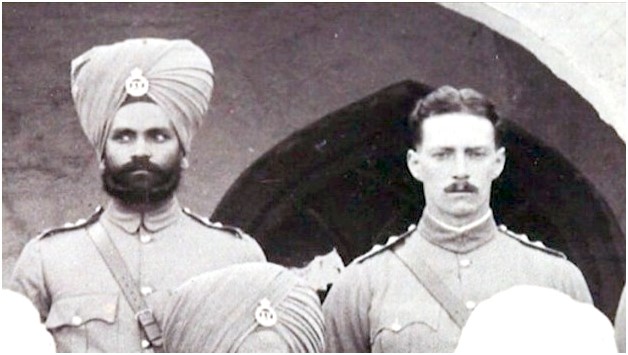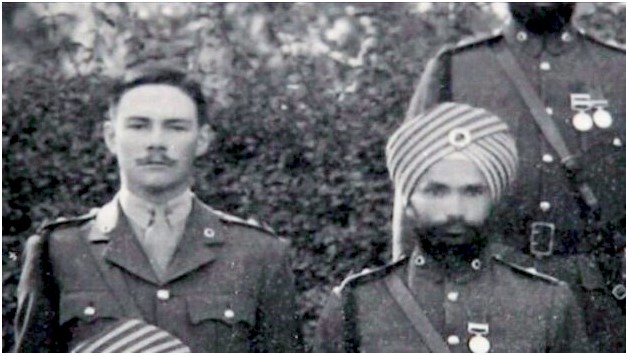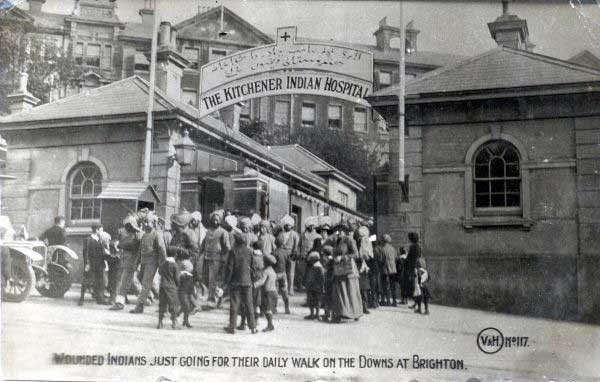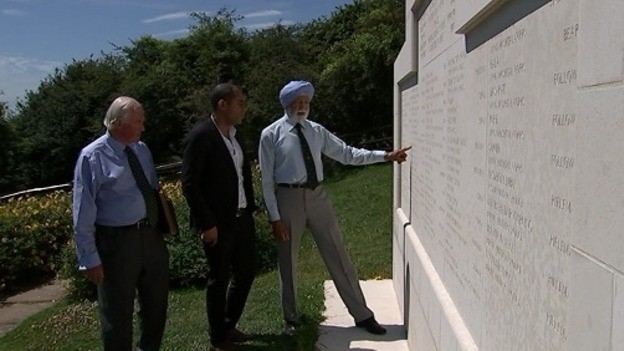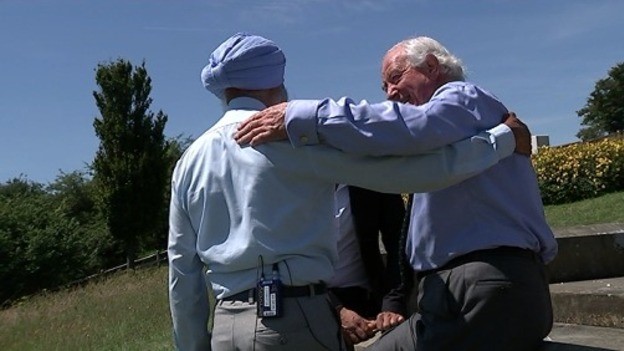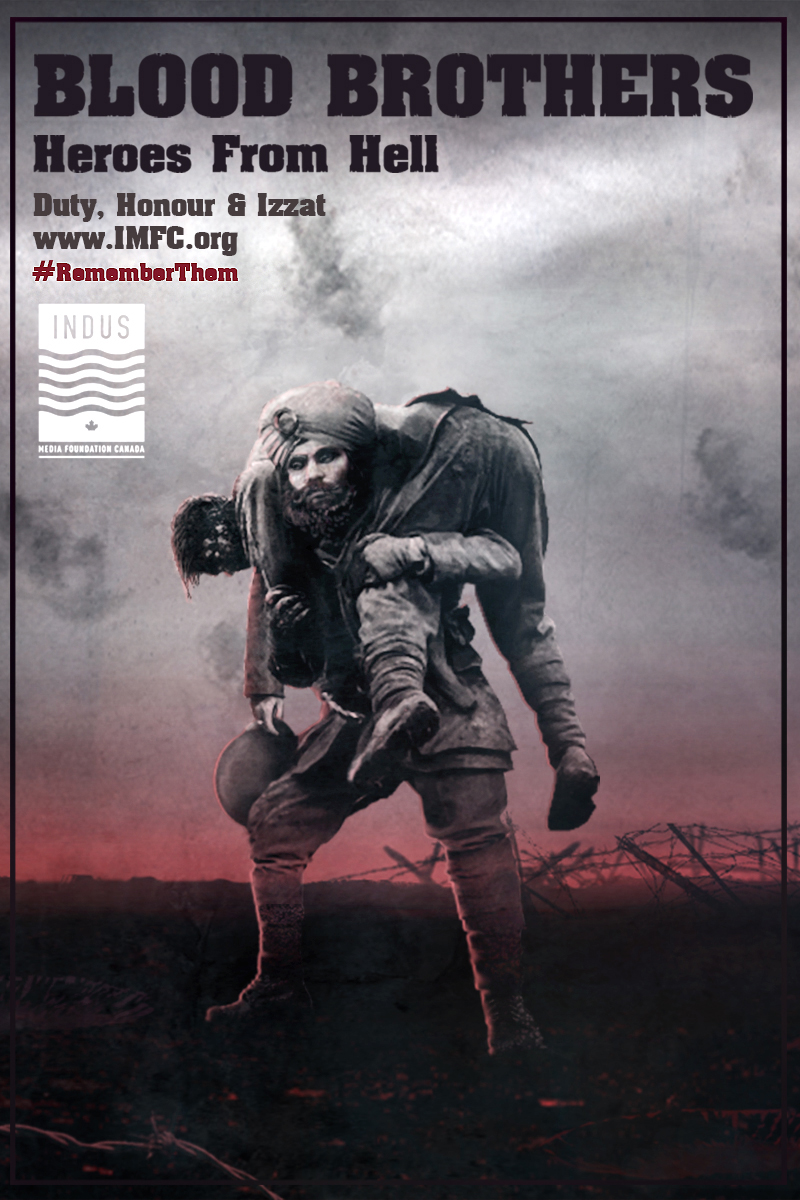
Not All WW1 Heroes Were White
Subedar Manta Singh Johal, 15th Ludhiana Sikhs
Son of Khem Singh of Salempur, Masandan, Jalandhar PUNJAB
Born : 1870 / Died : March 20, 1915
On this day 100 years ago an injured Indian soldier tragically died from wounds sustained in a courageous act of valour – an act that would give rise to a century of friendship.
Subadar ( Lieutenant) Manta Singh was injured in March 1915 during the battle of Neuve Chapelle, the first offensive of the British Forces in French Flanders. Having witnessed an English comrade, Lieutenant George Henderson, suffer a serious injury , Manta Singh reached for his friend picking him up to carry him to safety. During the selfless rescue, that would save his friends life, Manta Singh, while trying to navigate a hail of machine gun fire in no-man’s land, would be hit in the leg. Despite the injury, Manta Singh was able to find a wheelbarrow to help carry his fellow officer to a nursing station.
Manta Singh’s regiment , the 15th Sikhs were part of the Lahore Division, and along with others of the Indian Corp sustained many casualties during the fierce fighting of October 10-13th as chronicled in our previous post www.facebook.com/IndusMediaFoundation/posts/671480462980744 and portrayed in entries of the War dairy of the 15th Sikhs
>>
‘The ground in front was littered with German corpses and the whole place showed signs of the heavy fighting that had been going on there. The stretcher bearers were at work all night picking up the wounded. We had Subedar Gattajans killed and Subedar Manta Singh wounded. About 60 other ranks were killed and wounded.’
<<
The injured Indians were moved across the English Channel to Brighton's Kitchener Hospital which had been turned into a hospital for the Indian forces deployed on the Western Front. Here, in the UK , on the soil of the seat of Empire, Manta Singh would tragically succumb to his wounds which had become infected with gangrene.
Understanding the workings of Empire and the respect that had been engendered amongst the fighting men of the Imperial forces can be difficult today. However, during WW1 the bonds of loyalty between British and Indian were not at all unusual. The preceding Victorian era of small wars had forged a unique camaraderie within a ‘Punjabified’ British Indian Army; white and brown men fought, bled, and died together in distant outposts of Empire from Africa to China. In many parts of the east, the very face of the British Empire was a turban clad Punjabi in an Indian Army uniform standing side by side with the Sahib. While it may be difficult to explain to outsiders the bonds between soldiers, without this camaraderie a Punjabi dominated army would never have supported a century of British rule. Even those newly recruited into the war effort, who may have not fully appreciated all the intricacies of fighting in their colonial master's quarrel, remained true to the colours of their proud regiments. During WW1 over 9,000 Indian soldiers would be recognised for their acts of courage in the field.
The story of Manta Singh's gallantry did not end there in 1915 - the heroic act of bravery in which 2 officers became brothers-in-arms would also gave rise to an extraordinary friendship that spanned generations. After the war, George Henderson ensured that Manta Singh's son, Assa Singh Johal, was cared for. In time, Assa Singh would also join his father's regiment going on to fight in World War II alongside Robert Henderson, the son of George Henderson. The next generation of brothers-in-arms would serve together in France, Italy and North Africa. Remarkably, the bonds of blood would transcend another generation, though Assa and Robert have passed away, their sons, Jaimal and Ian, are to this day in regular contact.
At a recent commemoration in Brighton, Ian Henderson acknowledged that "he wouldn't be here but for Manta Singh".
Further images of the 'Blood Brothers' can be seen on our site www.imfc.org.
Please share this post to help #RememberThem #LestWeForget
And stay tuned for our next post:
The Germans take their turn at mounting an offensive thirty five miles north of Neuve Chapelle in the fields of Belgian Flanders. Six months after the battle of First Ypres the Canadians would face their baptism of fire as the Germans renew their efforts to move onto the Ports and into France employing a sinister new weapon to shatter the deadlock around Ypres.
#mantasingh
#mantasinghjohal
#NeuveChapelle
#sikhs #sikh #punjab #punjabi #firstworldwar #ww1 #Indian #GreatWar #ww1centennial #indocanadians #indocanadian#canadianhistory #sikhhistory #canadiansikhs #southasians
Illustrations:
- Blood Brothers – Manta Singh bringing a wounded George Henderson to safety. (IMFC Print)
- Manta Singh and George Henderson – World War One comrades. (Credit: ITV News)
- Assa Singh Johal and Robert Henderson, the next generation of brothers-in-arms fought together during World War Two. (Credit: ITV News)
- Kitchener Hospital utilized to treat injured Indian Army personnel. (Credit: CWGC)
- Manta Singh’s sacrifice is honoured on a memorial in Brighton UK. (Credit: ITV News)
- Grandsons, Jaimal Singh and Ian Henderson, embrace at Manta Singh’s memorial. (Credit: ITV News)
